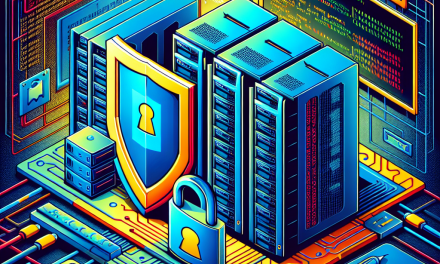In today’s digital landscape, data security is paramount. Whether you’re managing sensitive client information, proprietary business data, or simply ensuring the privacy of communications between your Linux servers, implementing secure encrypted communication is imperative. In this article, we will explore how to set up secure encrypted communication between Linux servers using SSH and OpenSSL, two robust tools widely used in the Linux ecosystem.
Why Encrypt Communication?
Unencrypted communication protocols expose your data to a variety of threats, including eavesdropping, man-in-the-middle attacks, and data tampering. By encrypting data in transit, you:
- Protect sensitive information from unauthorized access.
- Ensure data integrity, confirming that the information hasn’t been altered during transmission.
- Comply with legal and regulatory requirements regarding data protection.
Prerequisites
Before we dive into the setup process, make sure you have:
- Two or more Linux servers with SSH access.
- Root or sudo privileges on each server.
- Basic knowledge of command-line operations.
Step 1: Setting Up SSH
The Secure Shell (SSH) protocol is a popular method for secure communication between servers. Here’s how to set it up:
1. Install SSH
Most Linux distributions include SSH by default, but to ensure you have it installed, run the following command:
bash
sudo apt update
sudo apt install openssh-server
For Red Hat-based distributions:
bash
sudo yum install openssh-server
2. Start and Enable the SSH Service
After installing SSH, ensure that the service is running:
bash
sudo systemctl start sshd
sudo systemctl enable sshd
3. Configure SSH for Enhanced Security
Open the SSH configuration file:
bash
sudo nano /etc/ssh/sshd_config
Make the following changes:
-
Disable root login:
plaintext
PermitRootLogin no - Use public key authentication:
plaintext
PasswordAuthentication no
PubkeyAuthentication yes
After making these changes, restart the SSH service:
bash
sudo systemctl restart sshd
Step 2: Generate SSH Key Pair
- On the client server (the one you’ll connect from), generate an SSH key pair:
bash
ssh-keygen -t rsa -b 4096
Press Enter to accept the default file location and set a strong passphrase.
- Copy the public key to the remote server (you’ll be prompted for the remote server’s password):
bash
ssh-copy-id user@remote_server_ip
This command installs the public key in the ~/.ssh/authorized_keys file on the remote server, allowing password-less authentication.
Step 3: Testing the SSH Connection
Test the SSH connection by executing:
bash
ssh user@remote_server_ip
If everything is set up correctly, you should connect without a password prompt.
Step 4: Encrypting Data with OpenSSL
While SSH is typically sufficient for most uses, specific applications may benefit from additional encryption. OpenSSL can help when encrypting files or data communications.
1. Install OpenSSL
To ensure OpenSSL is installed, run:
bash
sudo apt install openssl
For Red Hat-based distributions:
bash
sudo yum install openssl
2. Encrypting Files
To encrypt a file:
bash
openssl enc -aes-256-cbc -salt -in plaintext.txt -out encrypted.txt
To decrypt it:
bash
openssl enc -d -aes-256-cbc -in encrypted.txt -out decrypted.txt
3. Secure Data Transmission Using OpenSSL
For encrypting data sent between servers, you can create a tunnel with OpenSSL:
- On the receiver server, create a listener:
bash
openssl s_server -accept 443 -www
- On the sender server, connect to the listener:
bash
openssl s_client -connect remote_server_ip:443
Conclusion
Setting up secure encrypted communication between Linux servers is fundamental in maintaining data integrity and confidentiality. By employing SSH for direct shell access and OpenSSL for file and data encryption, you can safeguard sensitive communications from various threats.
As security threats evolve, so should your strategies. Regularly audit your configurations, update software, and stay informed about the latest security practices. With these measures in place, you can confidently manage your Linux servers while ensuring your data remains private and secure.
Feel free to share your thoughts or experiences in the comments below!





